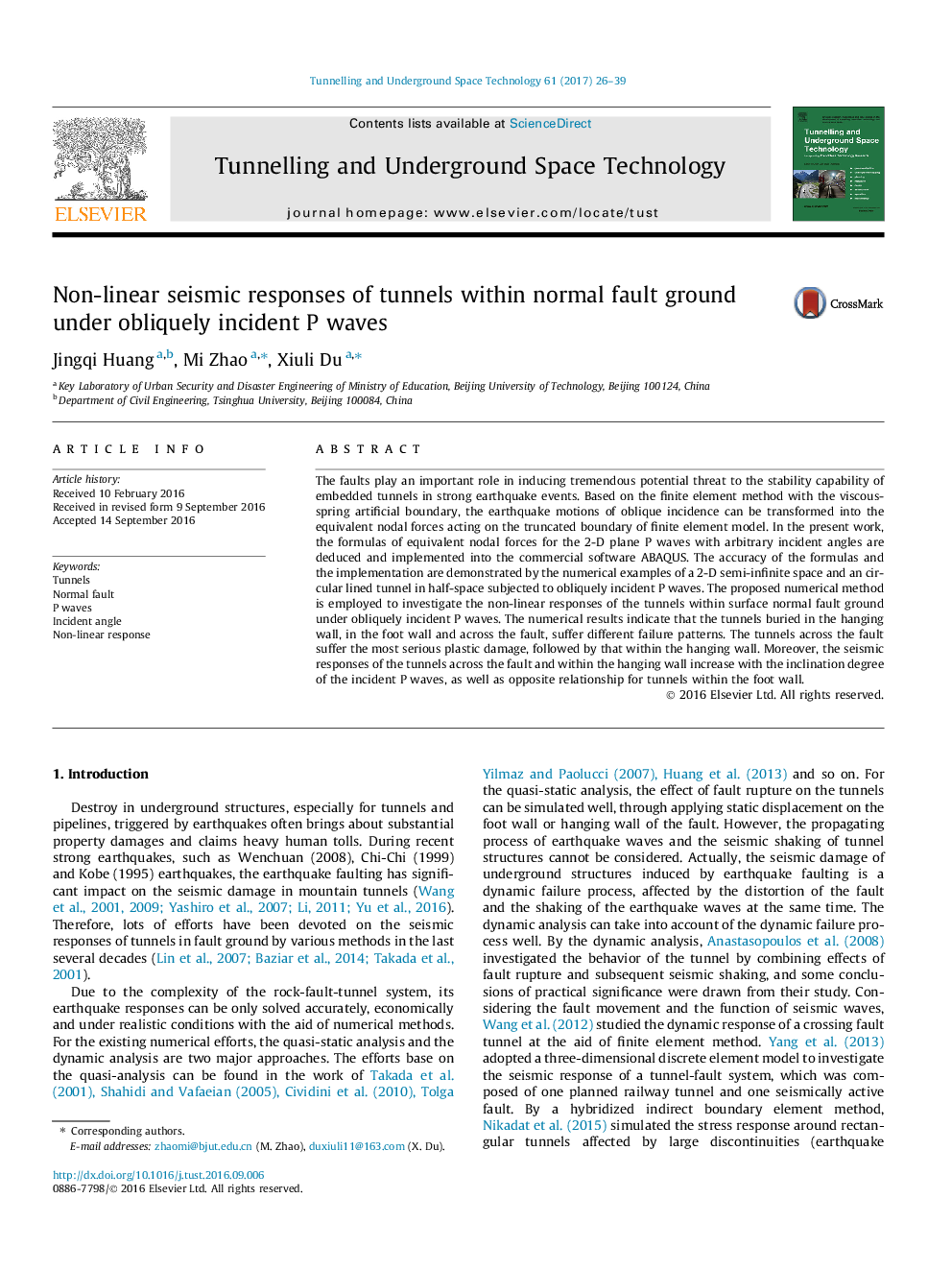| Article ID | Journal | Published Year | Pages | File Type |
|---|---|---|---|---|
| 4929395 | Tunnelling and Underground Space Technology | 2017 | 14 Pages |
Abstract
The faults play an important role in inducing tremendous potential threat to the stability capability of embedded tunnels in strong earthquake events. Based on the finite element method with the viscous-spring artificial boundary, the earthquake motions of oblique incidence can be transformed into the equivalent nodal forces acting on the truncated boundary of finite element model. In the present work, the formulas of equivalent nodal forces for the 2-D plane P waves with arbitrary incident angles are deduced and implemented into the commercial software ABAQUS. The accuracy of the formulas and the implementation are demonstrated by the numerical examples of a 2-D semi-infinite space and an circular lined tunnel in half-space subjected to obliquely incident P waves. The proposed numerical method is employed to investigate the non-linear responses of the tunnels within surface normal fault ground under obliquely incident P waves. The numerical results indicate that the tunnels buried in the hanging wall, in the foot wall and across the fault, suffer different failure patterns. The tunnels across the fault suffer the most serious plastic damage, followed by that within the hanging wall. Moreover, the seismic responses of the tunnels across the fault and within the hanging wall increase with the inclination degree of the incident P waves, as well as opposite relationship for tunnels within the foot wall.
Related Topics
Physical Sciences and Engineering
Earth and Planetary Sciences
Geotechnical Engineering and Engineering Geology
Authors
Jingqi Huang, Mi Zhao, Xiuli Du,
